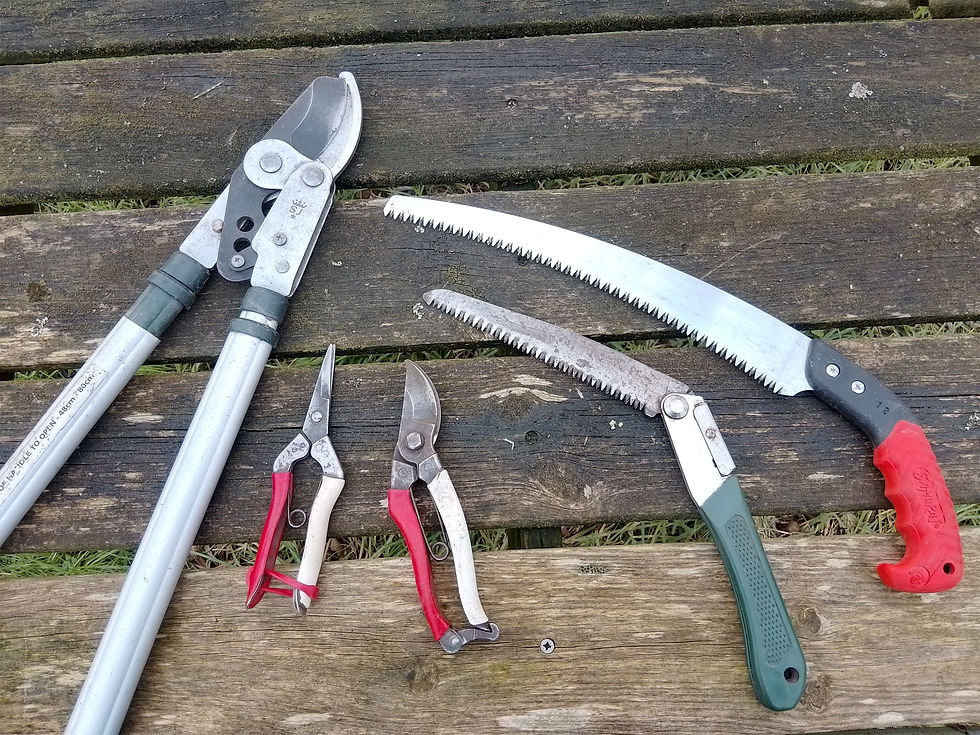Wildlife Garden Features
- Nancy Lowe

- Jan 14, 2022
- 3 min read
Updated: Nov 28, 2022
In the last of this three part series about wildlife gardening, we’ll be getting to the detail about what garden features you need to prioritise in your wildlife garden. This page is packed full of juicy tips for you, with videos and handouts to give you extra information and inspiration. Along with the foundations we’ve laid down, described in parts one and two, the simple features I describe here will create not only a thriving wildlife garden for you to enjoy, but also one that is going to be really valuable as a wildlife stepping stone within the wider natural networks outside of your garden.

If you haven’t already read parts 1 and 2, do take a look, but to quickly recap, we’ve looked at how supporting any garden wildlife, whether this is insects, birds, amphibians, mammals or even plants, means taking care of their three core needs – food, water and shelter. We also considered that we’ll get maximum benefits from our garden if we prioritise features that support the base of the food chain, which means plants and insects.
I like to include four key types of area in my wildlife gardens, each of them providing a range of valuable services for wildlife. In the videos below, I’ll introduce you to these areas, explaining what features they can include to really ramp up their wildlife benefits.
1. BEDS AND BORDERS
One of the most attractive features in any garden, the beds and borders can also be a powerhouse for garden wildlife, With careful plant selection, they can be packed full of food and habitat for insects, as well as birds and small animals, such as hedgehogs and frogs. In the video below, I describe how to achieve this, while the handouts beneath it include plant lists for some of my favourite wildlife friendly plants.
2. GRASSLAND
For many of us, grassland is an essential part of the garden, providing sunny open space for us to enjoy. With a little planning, our grassy areas can also be brilliant for wildlife, providing nectar, nursery space and important cover from predators for quite a wide variety of wildlife. In the video below, I introduce you to some of the grassland in my garden – lawn, spring meadow and summer meadow areas - and I explain how I manage these areas to support a range of different garden wildlife.
3. WILD AREAS
Where space and aesthetic allows, wild areas can be so beneficial in a garden. Their key function is in providing shelter for garden wildlife, but with careful planning, they are also excellent places for providing food for the wild world’s pickier eaters – insect larvae. These benefits and more are explored in the video below, along with management tips to keep these wilder areas from taking over the whole garden.
4. WATER
Last, but by no means least, every wildlife garden needs water. One of our foundational needs, some kind of water source is essential in the garden. In my final video below, learn how to maximise the wildlife benefits from your garden’s water, whether this is a simple water bowl or an elaborate garden pond.
If you’ve enjoyed this wildlife gardening series, please share it with anyone else you know who may be interested.
If you’d like to take your wildlife gardening exploits further, do consider joining our Nature Gardens Club, meeting regularly in each other’s gardens for wildlife gardening tours, peer support, plant swaps and much more.







Comments